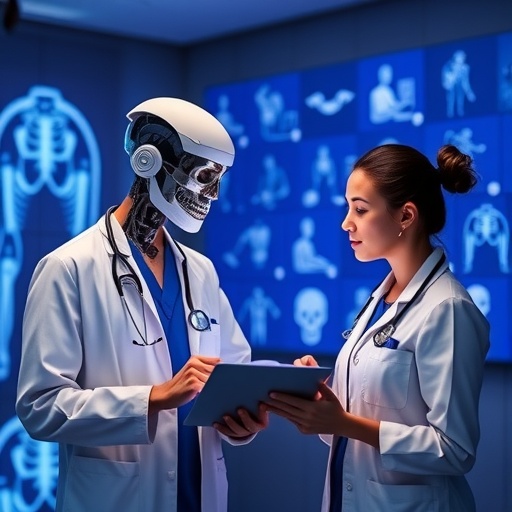
Credit: Anne Rayner/Vanderbilt University
Using patient outcomes data from approximately 1,800 hospitals, the largest demonstration to date of automated safety surveillance of a medical device is reported in this week's New England Journal of Medicine.
Vanderbilt medical informatics researcher and internal medicine specialist Michael Matheny, M.D., MPH, M.S., and colleagues demonstrate the effectiveness of an automated web-based surveillance system for spotting potential safety problems with less delay.
Their demonstration concerns a device used to close the small hole left in an artery after the insertion and removal of flexible tubing, that is, the hole left after vascular catheterization.
After three quarterly data uploads from the National Cardiovascular Data Repository CathPCI Registry, the automated system found a statistical signal indicating a potential safety issue with a vascular closure device called the Mynx.
The study's final results were based on data from approximately 146,000 registry patients, half of whom got the Mynx.
"The takeaway is we were able to detect a safety signal fairly quickly. When it comes to post-market safety surveillance for medical devices, you have to be really timely in your safety alerting for it to matter. In our world, nine months is quick enough that if you could get the signal to the FDA, they could act on it," said Matheny, assistant professor of Biomedical Informatics, Medicine and Biostatistics.
Matheny developed the surveillance system in partnership with medical informatics researcher and cardiologist Frederic Resnic, M.D., of Lahey Clinic in Burlington, Massachusetts. They call it DELTA, short for Data Extraction and Longitudinal Trend Analysis.
DELTA performs automated safety analyses and comparative effectiveness studies prospectively, as patient outcomes are electronically documented and uploaded to the system. When DELTA finds potential safety issues, it sends alerts to users via email.
DELTA is freely available as open-source software. According to Matheny, it can be adapted for surveillance of medical devices and drugs, and for quality profiling of clinical services and individual clinicians.
For medical device surveillance the FDA currently relies on case-by-case reports of adverse patient events from health care facilities, health care professionals, patients and manufacturers.
Matheny explained that a medical device company may begin altering a product within two or three years of introducing it, and if there's much of a lag in reporting safety issues, the manufacturer may be able to claim that findings don't apply to the product as it's currently configured.
"DELTA is for a user who understands statistics but isn't necessarily a programmer, who can take the tool box and collaborate with a clinician to design surveillance or comparative effectiveness studies," Matheny said.
For a given project, the user defines the exposures of interest, such as medical devices or drug exposures, and defines patient outcomes and risk factors relative to those exposures.
"Then you set up a time period for surveillance and hit a button. Automatically in the background the system takes the data feeds you've specified and does the sequential analysis, adjusting for repeated measurements, presenting visualizations as patterns emerge.
"If it were just one study, all of that wouldn't be a big deal," Matheny said, "but with DELTA you can clone these analyses, substituting different outcomes, different exposures. You can have 10, 20, 50 different studies running concurrently, and if any one of them finds a safety signal the system sends you an email."
In the study, having eventually captured 34 months of catheterization data, the investigators report that the risk of a vascular complication with the Mynx was 1.21 percent, compared to 0.76 percent with other vascular closure devices used in patients with similar profiles to those who got the Mynx; that is, in similar patients, the risk of a vascular complication was 59 percent greater with the Mynx.
Risk of bleeding at the access site was 0.38 percent with the Mynx, which amounted to a 36 percent increased risk compared to alternative devices.
The Mynx is still on the market.
"We do expect that use of the Mynx will decline. Our study would suggest that, all things being equal, you would use a different device, because of the risk of bleeding," Matheny said.
###
The investigators received funding from the FDA, the William M. Wood Foundation and the Department of Veterans Affairs.
Media Contact
Paul Govern
[email protected]
615-322-4747
http://www.mc.vanderbilt.edu/npa
############
Story Source: Materials provided by Scienmag





